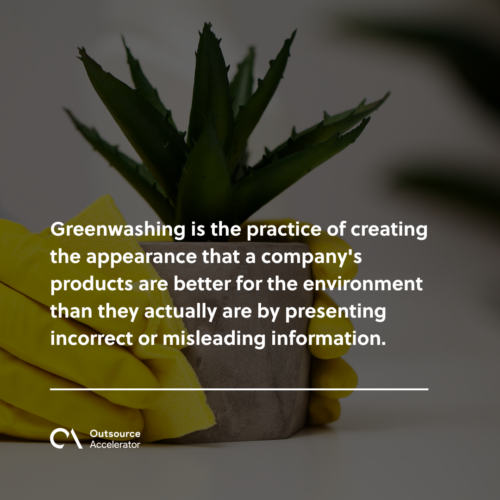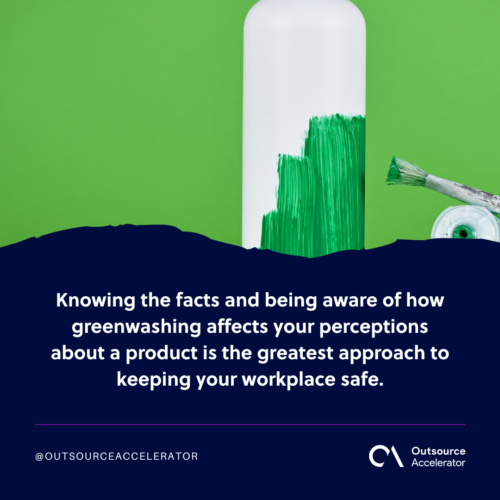Greenwashing
Definition
What does greenwashing mean?
Greenwashing is the practice of creating the appearance that a company’s products are better for the environment than they actually are by presenting incorrect or misleading information.
It is used by PR to convince the public that an organization’s products, purposes, and policies are eco-friendly. To fool people into believing that a company’s products are ecologically friendly, the term greenwashing has been coined.

Examples of greenwashing
Many consumers are not aware of the greenwashing content marketing strategy. Here are the common examples of greenwashing:
Rebranding or renaming a business
Consumers are more likely to buy a product if it has a new name, logo, slogan, or motto. Most of the time, companies use these strategies to greenwash. By simply incorporating the color green into the logo, a product may look ecologically friendly.
As a result, consumers may get the impression that the product is made from natural ingredients. Customers may be more inclined to purchase a product if it features images that suggest the product has a positive environmental impact, such as animals, plants, flowers, or water.
Manipulating the credibility of perception
This strategy involves focusing on the small number of environmental benefits that a product has while ignoring the larger impacts it has on the environment.
Making a claim about the product that may be true, but isn’t helpful or crucial in the bigger role the product claims to play in environmental conservation can also be a problem. Some companies go to great lengths to make false statements, which violates several ethical standards.
Aiming to divert customers
Marketers use images and videos that are attractive to entice customers to buy their products. There are warnings or cautions that are printed in tiny characters and are located far away from the stated claim.
In this way, the consumer is distracted from reading and comprehending the disclosure and its connection to the claim. In some cases, consumers don’t even get a chance to read the warnings because they’re always located at the bottom of the box compared to the green claims, which are prominent and on the label.
Qualities of a greenwashing campaign
Knowing the facts and being aware of how greenwashing affects your perceptions about a product is the greatest approach to keeping your workplace safe.
Here are the common characteristics of a greenwashing marketing campaign:
Vague message
Claims about the environment that lack specific information and are considered useless. Term or expressions that have no precise definition. For example, a product was labeled as
“eco-friendly” without any explanation.
Unreliable
Greenwashing is a practice of making environmental claims without providing proof to back them up. Consumer-recycled content may be claimed on items, but no facts or details are provided to back up the claim.
Unsupported claims
That which is not supported by proof or third-party certification. Product claims that a certain percentage of the product is made from recycled content without offering any actual statistics or details are an example of this type of marketing practice.

How to avoid greenwashing?
Both seller and consumer must be knowledgeable about the deceiving marketing strategy of greenwashing.
Customers who care about the environment may be led astray by this practice and end up purchasing counterfeit goods. Here are some of the things you have to lookout:
- The product’s green claims should be accompanied by clear font and language on its packaging and promotion.
- The product must have specified packaging or environmental claims.
- An environmental attribute or advantage should not be overstated in a product’s marketing claim.
- If a product makes a claim that it is better than the competition, that claim must be supported.
- The company must make it clear that your product has an environmental benefit.
For companies, if you want to create environmentally friendly products, you must be careful that you are not greenwashing. Here are some things to consider to make sure that your green campaign is reliable:
- Make sure your assertions about environmental sustainability are backed up by evidence and are always up to date.
- If you claim to be environmentally friendly, provide verifiable proof to back up your claims.
- Don’t confuse your audience with jargon. The description of the products must be easy to understand.







 Independent
Independent




